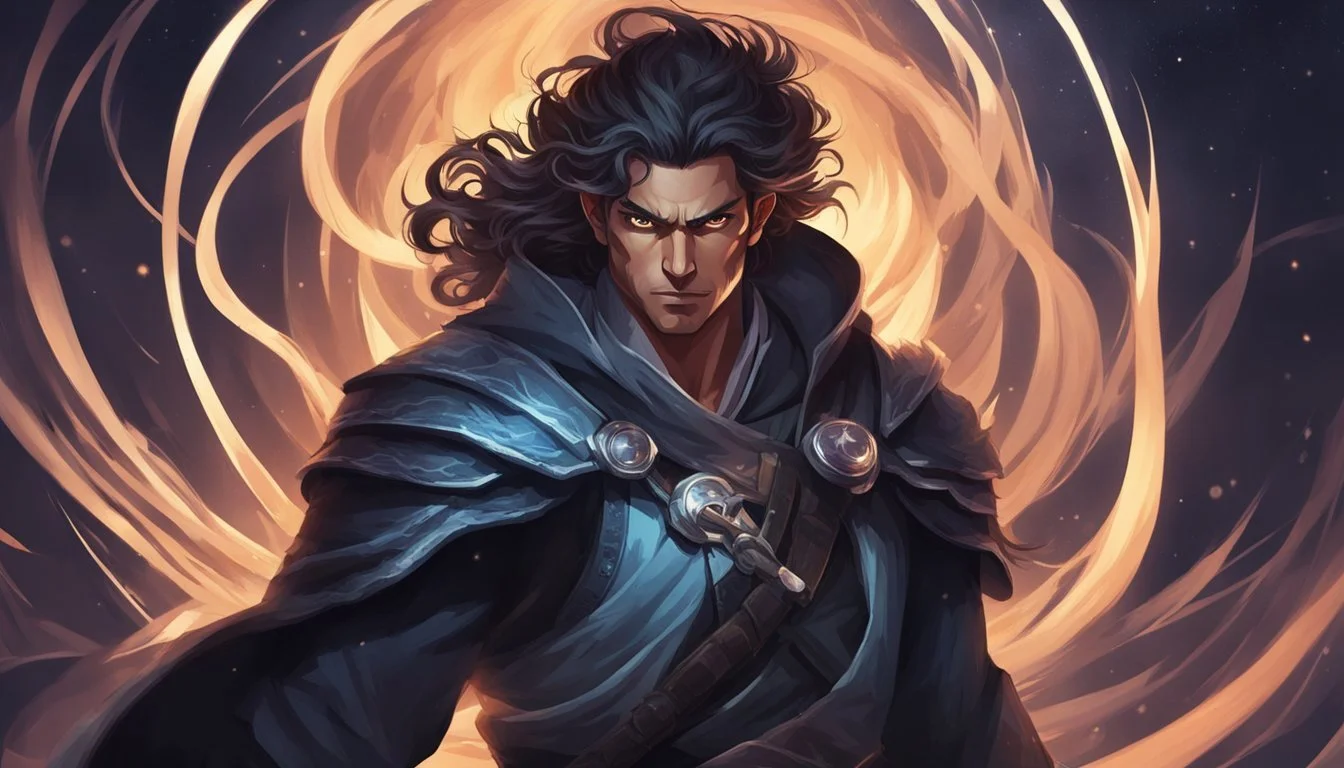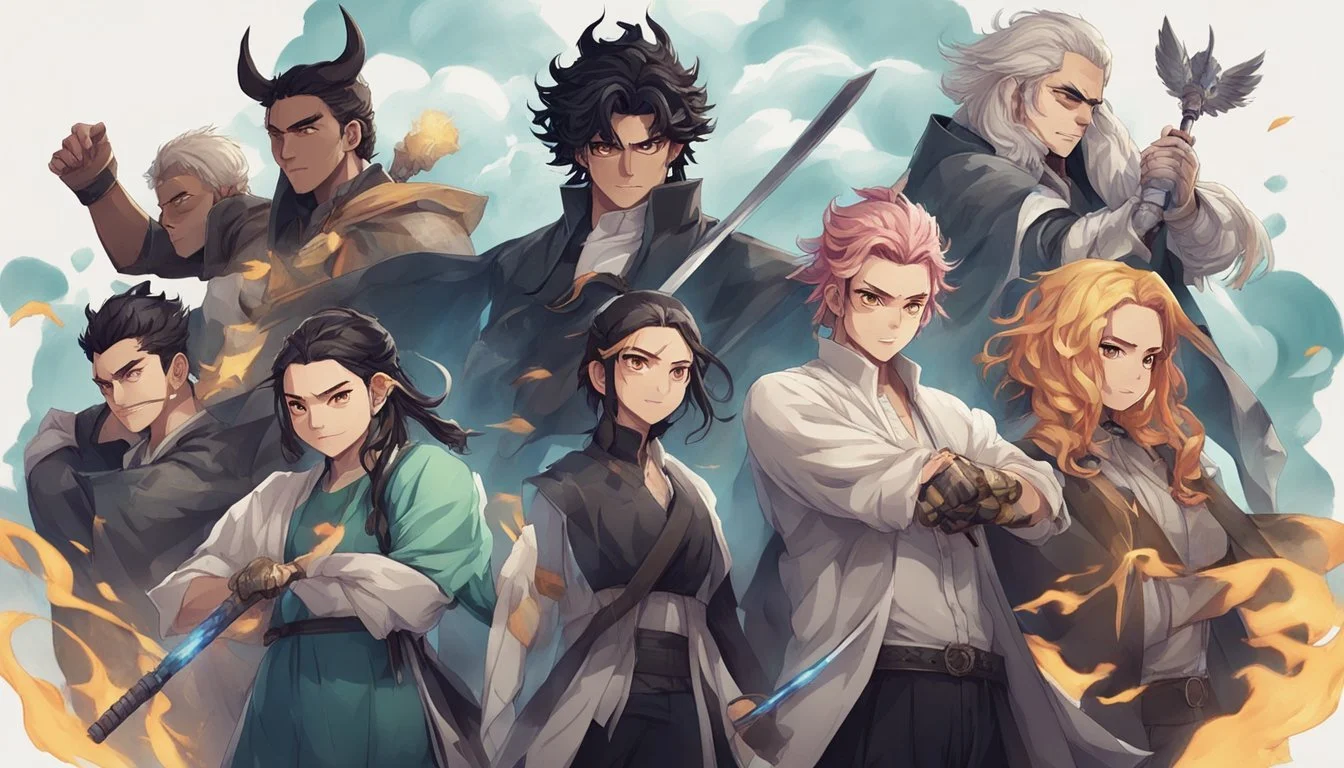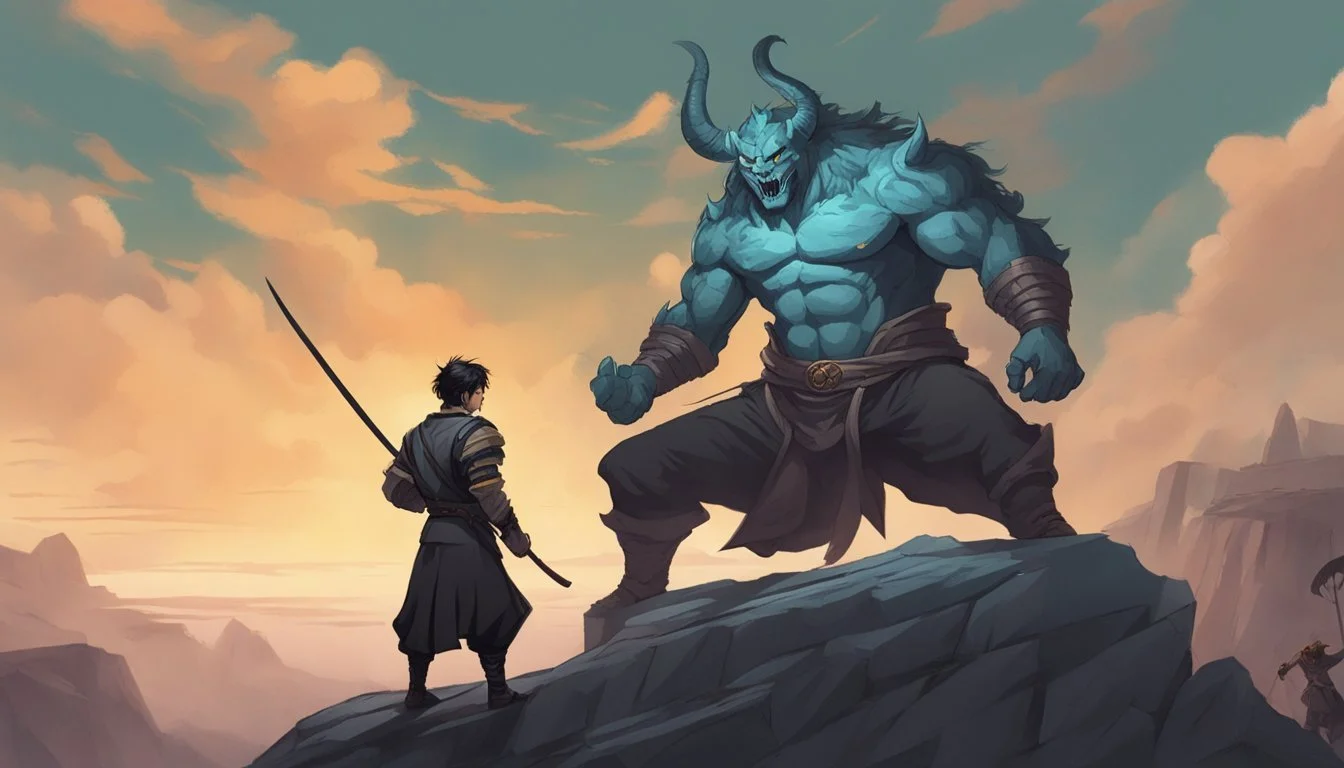Unleash the Power: Discover the Demon Slayer Character Personality Types!
Demon Slayer: Kimetsu no Yaiba has captivated audiences worldwide with its compelling story and memorable characters. Each character in the series brings a unique personality that contributes to the vibrant world of demon slaying.
Understanding the personalities of Demon Slayer characters through the Myers-Briggs Type Indicator (MBTI) can provide deeper insights into their motivations and behaviors. This popular personality assessment tool categorizes individuals into 16 distinct types based on their preferences in four key areas: Extraversion/Introversion, Sensing/Intuition, Thinking/Feeling, and Judging/Perceiving.
From the determined ESFJ Tanjiro Kamado to the energetic ENFP Zenitsu Agatsuma, Demon Slayer showcases a diverse range of personality types. Exploring these characters through the lens of MBTI can enhance viewers' appreciation for the series and offer a new perspective on their favorite demon slayers and demons alike.
Overview of Demon Slayer
Demon Slayer, known in Japanese as Kimetsu no Yaiba, is a popular shonen manga and anime series. It follows the journey of Tanjiro Kamado as he battles demons and seeks to cure his sister Nezuko.
Concept and Creation
Demon Slayer was created by manga artist Koyoharu Gotouge. The series is set in Taisho-era Japan, blending historical elements with supernatural action. Gotouge drew inspiration from traditional Japanese folklore and demon-slaying tales.
The manga debuted in Weekly Shonen Jump in 2016. It quickly gained attention for its distinctive art style and compelling characters. The story focuses on Tanjiro's growth as a demon slayer while exploring themes of family, sacrifice, and humanity.
Popularity and Impact
Demon Slayer's popularity exploded with the release of its anime adaptation in 2019. The series became a cultural phenomenon in Japan and gained a massive international following.
Its success extended beyond anime and manga. Demon Slayer generated record-breaking box office sales with its film "Mugen Train." The franchise has inspired video games, merchandise, and even themed attractions.
Critics praise the series for its animation quality, character development, and emotional storytelling. Demon Slayer's impact on the anime industry has been significant, setting new standards for production values and global appeal.
Main Characters and Personalities
Demon Slayer features a diverse cast of characters with unique personalities that drive the story forward. The main protagonists each possess distinct traits and temperaments that shape their interactions and development throughout the series.
Tanjiro Kamado's Personality Profile
Tanjiro Kamado embodies kindness and determination. His empathetic nature allows him to understand both humans and demons, often seeking peaceful resolutions when possible. Tanjiro's strong sense of justice motivates him to protect others and fight against evil.
He demonstrates unwavering resolve in the face of adversity, never giving up on his goals. This perseverance is balanced by his compassionate heart, which extends even to his enemies at times.
Tanjiro's analytical mind enables him to quickly assess situations and adapt his strategies. His keen sense of smell adds a unique dimension to his perceptiveness, aiding him in battle and daily life.
Nezuko Kamado's Character Traits
Nezuko Kamado, despite her transformation into a demon, retains her human emotions and protective instincts. Her fierce loyalty to Tanjiro and innate desire to safeguard humans set her apart from other demons.
She displays remarkable self-control, resisting the urge to harm humans even when hungry. This inner strength is a testament to her willpower and the bond she shares with her brother.
Nezuko's character is often expressed through non-verbal cues, as she rarely speaks. Her actions and expressions convey a range of emotions, from playful curiosity to fierce determination in battle.
Zenitsu Agatsuma's Behavioral Analysis
Zenitsu Agatsuma presents a complex personality, marked by stark contrasts between his conscious and unconscious states. When awake, he often exhibits cowardice and anxiety, frequently voicing his fears and doubts.
His pessimistic outlook and tendency to overreact to situations provide comic relief. However, this behavior masks his underlying potential and skills.
When asleep or in dire situations, Zenitsu undergoes a dramatic transformation. His innate talents surface, revealing exceptional swordsmanship and bravery. This duality in his character creates an intriguing dynamic within the group.
Inosuke Hashibira's Temperament
Inosuke Hashibira is characterized by his wild and unpredictable nature. Raised by boars, he lacks social graces and often acts on instinct rather than reason. His brash personality leads to frequent conflicts and misunderstandings with others.
Despite his rough exterior, Inosuke possesses a strong sense of pride and a competitive spirit. He constantly seeks to prove his strength and improve his skills, viewing every challenge as an opportunity to grow.
Inosuke's feral upbringing has honed his physical abilities and instincts. His unconventional fighting style and keen spatial awareness make him a formidable ally in battle.
Supporting Characters and Personalities
Demon Slayer's supporting cast brings depth and variety to the series. Their unique personalities and backstories enrich the narrative, providing crucial support to the main characters.
Hashira Members and Their Psyches
The Hashira, elite demon slayers, each possess distinct personalities. Shinobu Kocho maintains a calm demeanor, masking her inner turmoil and desire for vengeance. Her gentle smile often contrasts with her deadly intent.
Giyu Tomioka, reserved and stoic, struggles with survivor's guilt. His quiet nature belies a deep sense of duty and protectiveness towards his comrades.
Mitsuri Kanroji stands out with her bubbly personality and open displays of emotion. Her cheerful disposition and love for her fellow demon slayers make her a beacon of positivity within the group.
Each Hashira's unique psyche influences their fighting style and interactions with others, adding layers to the story's dynamics.
Kanao Tsuyuri's Disposition
Kanao Tsuyuri initially appears emotionless and indecisive, relying on a coin flip to make choices. This behavior stems from her traumatic past and serves as a coping mechanism.
As the story progresses, Kanao develops her own will and learns to express emotions. Her growth is marked by increased independence in decision-making and forming bonds with others.
Kanao's exceptional observational skills and agility make her a formidable demon slayer. Her quiet strength and evolving personality contribute significantly to the team's dynamics.
Sakonji Urokodaki's Principles
Sakonji Urokodaki, a former Water Hashira, embodies wisdom and discipline. His strict training methods stem from a desire to protect his students from the dangers of demon slaying.
Urokodaki's face-covering tengu mask symbolizes his mysterious nature and adds to his imposing presence. Despite his stern exterior, he cares deeply for his pupils, particularly Tanjiro and Nezuko.
His unwavering principles and vast experience make him a respected figure in the demon slaying world. Urokodaki's influence extends beyond combat training, shaping the moral compass of those he mentors.
Antagonists and Their Motivations
The antagonists in Demon Slayer possess complex motivations driving their actions. From the supreme demon Muzan Kibutsuji to his diverse followers, each villain pursues unique goals rooted in their transformed existence.
Muzan Kibutsuji's Ambitions
Muzan Kibutsuji, the progenitor of demons, seeks to conquer the sun and achieve true immortality. His fear of death fuels an obsessive quest to eliminate any threats to his existence.
Muzan creates other demons to serve his purposes and further his goals. He manipulates his subordinates through a mix of charisma, fear, and the promise of power.
Despite his immense strength, Muzan remains paranoid about potential weaknesses. This paranoia shapes many of his decisions and strategies throughout the series.
Demons' Diversity and Drives
The demons under Muzan's control exhibit a wide range of personalities and motivations. Some embrace their demonic nature, reveling in violence and cruelty.
Others struggle with their transformed state, clinging to remnants of their humanity. These conflicted demons often have tragic backstories that shaped their current existence.
Many demons are driven by a desire for strength and status within Muzan's hierarchy. They compete fiercely to prove their worth and gain his favor.
Some demons develop unique philosophies or codes of conduct. These personal beliefs can influence their actions and relationships with both humans and other demons.
Personality Typing in Demon Slayer
Demon Slayer characters exhibit distinct personality traits that can be analyzed through various psychological frameworks. These analyses provide insights into character motivations and behaviors.
Myers-Briggs Type Indicator (MBTI)
The MBTI system categorizes personalities into 16 types based on four dichotomies: Extraversion/Introversion, Sensing/Intuition, Thinking/Feeling, and Judging/Perceiving. In Demon Slayer, characters display a range of these traits.
Tanjiro Kamado, the protagonist, often exhibits ENFJ characteristics. His strong empathy and desire to help others align with the Feeling preference. Zenitsu Agatsuma may be typed as an ISFP, with his artistic sensibilities and intense emotions.
Inosuke Hashibira's impulsive nature and physical prowess suggest an ESTP personality. Nezuko Kamado, despite her demon transformation, retains INFP-like qualities in her protective instincts and inner moral compass.
Enneagram and Zodiac Correlations
Beyond MBTI, Enneagram and zodiac typologies offer additional perspectives on Demon Slayer characters. The Enneagram system identifies nine basic personality types and their interconnections.
Tanjiro might align with Type 2 (The Helper) or Type 9 (The Peacemaker). Inosuke could represent Type 8 (The Challenger). Zenitsu may embody aspects of Type 6 (The Loyalist) or Type 7 (The Enthusiast).
Zodiac correlations, while less scientific, can be entertaining for fans. Tanjiro's determined nature might suggest a Capricorn or Taurus sign. Zenitsu's emotional volatility could be interpreted as Pisces or Cancer traits.
Character Development and Relationships
The characters in Demon Slayer undergo significant growth as they form bonds, face challenges, and confront personal demons. Their evolving relationships and interactions drive much of the story's emotional core.
Evolution of Character Dynamics
Tanjiro Kamado's journey from a kind-hearted coal seller to a skilled demon slayer showcases remarkable character development. His unwavering determination to protect his sister Nezuko and defeat demons shapes his interactions with allies and enemies alike. As Tanjiro hones his skills, his relationships with fellow Demon Slayer Corps members deepen.
Zenitsu Agatsuma transforms from a cowardly novice to a more confident warrior, largely due to his friendships with Tanjiro and Inosuke. His growth is evident in his increased ability to face fears and protect others.
Inosuke Hashibira's aggressive nature softens as he learns to work in a team. His rivalry with Tanjiro evolves into a strong bond of mutual respect and friendship.
Alliances and Rivalries
The Demon Slayer Corps fosters both camaraderie and competition among its members. Tanjiro forms alliances with fellow demon slayers like Zenitsu, Inosuke, and Kanao Tsuyuri. These relationships are crucial for their survival and success in battling demons.
Rivalries within the Corps, such as that between Sanemi Shinazugawa and Giyu Tomioka, add tension and complexity to the character dynamics. These conflicts often stem from differing ideologies or past experiences.
Demons like Akaza and Kokushibo have their own alliances and rivalries, providing insight into the complex hierarchy of demon society. Their interactions with human characters reveal the blurred lines between good and evil in the series.
Role of Family and Friends
Family bonds play a central role in Demon Slayer, particularly for Tanjiro and Nezuko Kamado. Their sibling relationship drives the main plot and serves as a beacon of hope in a world filled with darkness.
The Demon Slayer Corps becomes a surrogate family for many characters, offering support and purpose. Shinobu and Kanae Kocho's sisterly bond influences their actions and motivations as Hashira.
Friendships formed during training and missions prove vital for characters' growth and survival. The trio of Tanjiro, Zenitsu, and Inosuke exemplifies how diverse personalities can come together to form a strong, supportive unit.
Cultural Influence
Demon Slayer's unique characters and their distinct personalities have left an indelible mark on popular culture. The series' impact extends far beyond Japan, reshaping perceptions of anime and manga worldwide.
Impact on Anime and Manga
Demon Slayer has set new standards for character development in anime and manga. Its success has inspired other creators to focus on crafting complex, relatable personalities. The series' approach to character growth, exemplified by Tanjiro's unwavering determination and Tamayo's internal struggle, has become a blueprint for storytelling in the industry.
Anime characters now often display more nuanced traits, moving away from one-dimensional archetypes. This shift is evident in newer series like Jujutsu Kaisen, which draws inspiration from Demon Slayer's character-driven narrative style.
Global Reception and Fandom
The series' characters have resonated with audiences worldwide, sparking a global fandom. Cosplay events feature countless Demon Slayer enthusiasts embodying their favorite characters, from Obanai Iguro to Muichiro Tokito.
Fan discussions often center on characters' personalities and motivations. Online forums buzz with debates about Gyomei Himejima's stoic nature or Zenitsu's growth arc. This engagement has led to increased anime viewership and manga sales globally.
The characters' popularity has also driven merchandise sales, with figurines and apparel featuring beloved personalities flying off shelves internationally.
Art and Animation
Demon Slayer's visual style sets it apart in the anime world. The series features stunning animation that brings the characters and their abilities to life.
Ufotable, the studio behind the anime adaptation, employs dynamic camera movements and fluid action sequences. This creates an immersive viewing experience, especially during intense battles.
The character designs in Demon Slayer are distinctive and memorable. Each character has unique visual traits that reflect their personality and abilities.
Color plays a crucial role in the series' aesthetic. Vibrant hues are used to represent different breathing techniques and demon blood arts.
The manga's art style, while less elaborate than the anime, still captures the essence of each character. Koyoharu Gotouge's illustrations convey emotion and action effectively through expressive line work.
Demon Slayer's animation quality is particularly evident in its fight scenes. The smooth transitions and detailed effects make each battle a visual spectacle.
The series also incorporates traditional Japanese art elements, such as ukiyo-e inspired backgrounds. This adds depth to the historical setting of the story.





